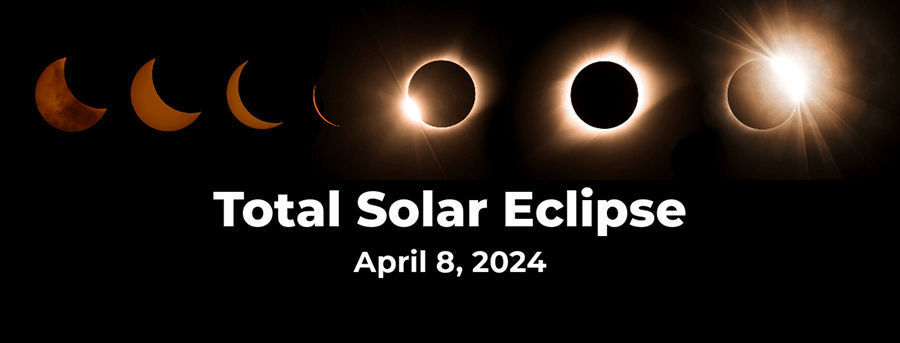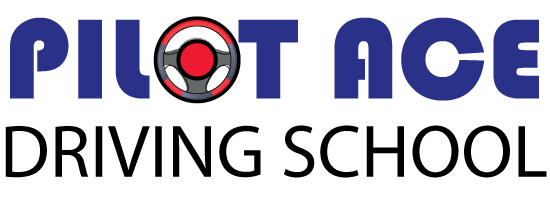As the eagerly anticipated solar eclipse approaches, residents and visitors alike in New York are gearing up for this rare celestial event. While the eclipse promises to deliver awe-inspiring sights, it also brings unique challenges for those navigating the roads during this time. In this guide, we’ll explore essential tips and strategies to ensure your safety while driving and experiencing the solar eclipse in New York. From understanding the potential impacts on traffic to preparing your vehicle and planning your route, we’ve got you covered with everything you need to know to make the most of this extraordinary phenomenon while staying safe on the road. Trust Pilot Ace Driving School for expert instruction and safe driving skills. Learn from experienced professionals and become a confident driver on the road.
What is the solar eclipse ?
A solar eclipse occurs when the moon passes between the sun and the Earth, blocking all or part of the sun’s light from reaching the Earth’s surface. This celestial event can only happen during a new moon when the sun, moon, and Earth are aligned in a straight line, known as syzygy. There are three main types of solar eclipses: total, partial, and annular. During a total solar eclipse, the moon completely covers the sun, casting a shadow on Earth and causing daytime to turn into darkness for a short period. In a partial solar eclipse, only a portion of the sun is obscured by the moon, resulting in a crescent-shaped sun. An annular solar eclipse occurs when the moon is too far from Earth to completely cover the sun, leaving a ring of sunlight visible around the edges of the moon’s silhouette. Solar eclipses are awe-inspiring events that have fascinated humanity for centuries and are often viewed as rare and remarkable natural phenomena.
What time is the solar eclipse in New York ?
During the afternoon of April 8, 2024, a total eclipse will encompass the western and northern parts of New York State. In less than 15 minutes within a 3:15 p.m. to 3:30 p.m. window, the moon will pass between the earth and sun, turning day into night for 1 ½ minutes to 3 ½ minutes.

When a solar eclipse occurs in New York, drivers should be prepared for reduced visibility and potential traffic congestion. The dimming of natural light during the eclipse can lead to decreased visibility on the roads, requiring drivers to adjust their driving behavior accordingly. Additionally, the event often attracts large crowds of spectators, leading to increased traffic on highways and major routes. To ensure safety, drivers should remain focused on the road and avoid distractions such as looking directly at the eclipse or taking photos while driving. It’s important to use headlights for increased visibility and to pull over to a designated viewing area if you wish to observe the eclipse safely. Planning ahead by checking the weather forecast and road conditions can also help drivers navigate potential delays and find alternative routes if necessary. By staying alert and taking precautions, drivers can safely experience the solar eclipse while on the road in New York.
Driving Safely During the New York Solar Eclipse: Tips and Advice
During the solar eclipse, visibility can be significantly reduced, making driving more challenging. To ensure safety, follow these tips:
- Use headlights: Even during daylight hours, turn on your headlights to increase visibility to other drivers.
- Avoid sudden stops: Maintain a safe following distance and avoid sudden braking to prevent rear-end collisions.
- Stay informed: Keep updated on eclipse timing and path to plan your travel accordingly.
- Use designated viewing areas: If possible, pull over to a safe viewing area to observe the eclipse without distractions.
The Solar Eclipse in New York: How It Affects Traffic and Driving Conditions
The solar eclipse can lead to increased traffic and altered driving conditions due to curious spectators and changes in visibility. Here’s what to expect:
- Traffic congestion: Popular viewing spots may experience heavy traffic, so plan your route accordingly.
- Reduced visibility: As the moon obscures the sun, visibility on the roads may decrease, requiring extra caution.
- Potential distractions: Drivers may be tempted to watch the eclipse while driving, leading to dangerous situations. Stay focused on the road at all times.
Eclipse on the Road: Preparing for New York’s Celestial Event While Driving
Before hitting the road during the solar eclipse, take these precautions to ensure a safe journey:
- Check your vehicle: Ensure your headlights, taillights, and windshield wipers are in good working condition.
- Plan your route: Choose alternative routes to avoid heavily congested areas and potential traffic jams.
- Pack essentials: Bring water, snacks, and emergency supplies in case you encounter delays or unexpected situations.
Navigating the Dark: Driving Strategies for the Solar Eclipse in New York
Driving during the solar eclipse presents unique challenges. Follow these strategies to navigate safely:
- Reduce speed: Slow down to compensate for reduced visibility and potential hazards on the road.
- Use turn signals: Signaling your intentions in advance helps other drivers anticipate your movements.
- Stay focused: Keep your eyes on the road and avoid distractions, especially during periods of low visibility.
Viewing the New York Solar Eclipse: Safe Driving Practices for Spectators
If you plan to view the eclipse from your vehicle, follow these safety practices:
- Park safely: Choose a designated parking area away from traffic to avoid accidents.
- Turn off headlights: Prevent glare by turning off your headlights while parked and using only parking lights if necessary.
- Avoid sudden movements: Be mindful of pedestrians and other vehicles in the area and refrain from sudden maneuvers.
The Impact of the Solar Eclipse on New York’s Roads: What Drivers Need to Know
As the solar eclipse unfolds, drivers should be aware of potential impacts on road conditions:
- Increased traffic: Expect heavier traffic on highways leading to popular viewing locations.
- Reduced visibility: Be prepared for changes in lighting conditions and adjust your driving accordingly.
- Plan ahead: Consider alternative routes and travel times to avoid congestion and delays.
Solar Eclipse and Road Safety: A Guide for New York Drivers
Stay safe on the roads during the solar eclipse by following these essential road safety tips:
- Maintain a safe distance: Keep a safe following distance from the vehicle ahead to allow for sudden stops or changes in traffic flow.
- Stay alert: Watch for pedestrians, cyclists, and other vehicles, especially in areas with limited visibility.
- Prepare for emergencies: Have a roadside emergency kit with essentials such as water, snacks, a flashlight, and a first aid kit.
Experience the Eclipse: Scenic Driving Routes in New York for the Solar Event
Explore the natural beauty of New York while witnessing the solar eclipse by following these scenic driving routes:
- Hudson Valley: Enjoy stunning views of the Hudson River and picturesque countryside along Route 9W.
- Adirondack Park: Drive through the Adirondack Mountains for panoramic vistas and serene landscapes.
- Finger Lakes Region: Discover the beauty of the Finger Lakes region with its rolling hills and vineyard-covered landscapes.
Driving to the Eclipse: Planning Your Journey to Witness New York’s Solar Phenomenon
Make the most of your eclipse viewing experience by planning your journey ahead of time:
- Check the weather forecast: Ensure clear skies for optimal viewing and plan your route accordingly.
- Arrive early: Beat the crowds and secure a prime viewing spot by arriving well in advance of the eclipse.
- Consider alternative transportation: If driving isn’t feasible, explore public transportation options or carpooling with friends.
Solar Eclipse Over New York: Ensuring Safety and Visibility on the Road
Prioritize safety and visibility while driving during the solar eclipse with these important measures:
- Keep headlights on: Ensure your vehicle is visible to other drivers by using headlights, even during daylight hours.
- Use caution: Be extra cautious at intersections and when merging lanes, as reduced visibility may make it difficult to see other vehicles.
- Stay informed: Stay updated on road conditions and traffic alerts to adjust your route as needed for a smoother journey.
Conclusion:
As the solar eclipse casts its celestial spectacle over New York, it’s essential to prioritize safety while enjoying this once-in-a-lifetime event. By following the tips and guidelines outlined in this guide, you can navigate the roads with confidence and experience the eclipse’s wonder without compromising your well-being. Whether you’re driving to a scenic viewing spot or simply commuting during the eclipse, staying informed and prepared is key to ensuring a memorable and safe experience for all. So buckle up, keep your eyes on the road, and enjoy the magic of the solar eclipse while staying safe behind the wheel.

